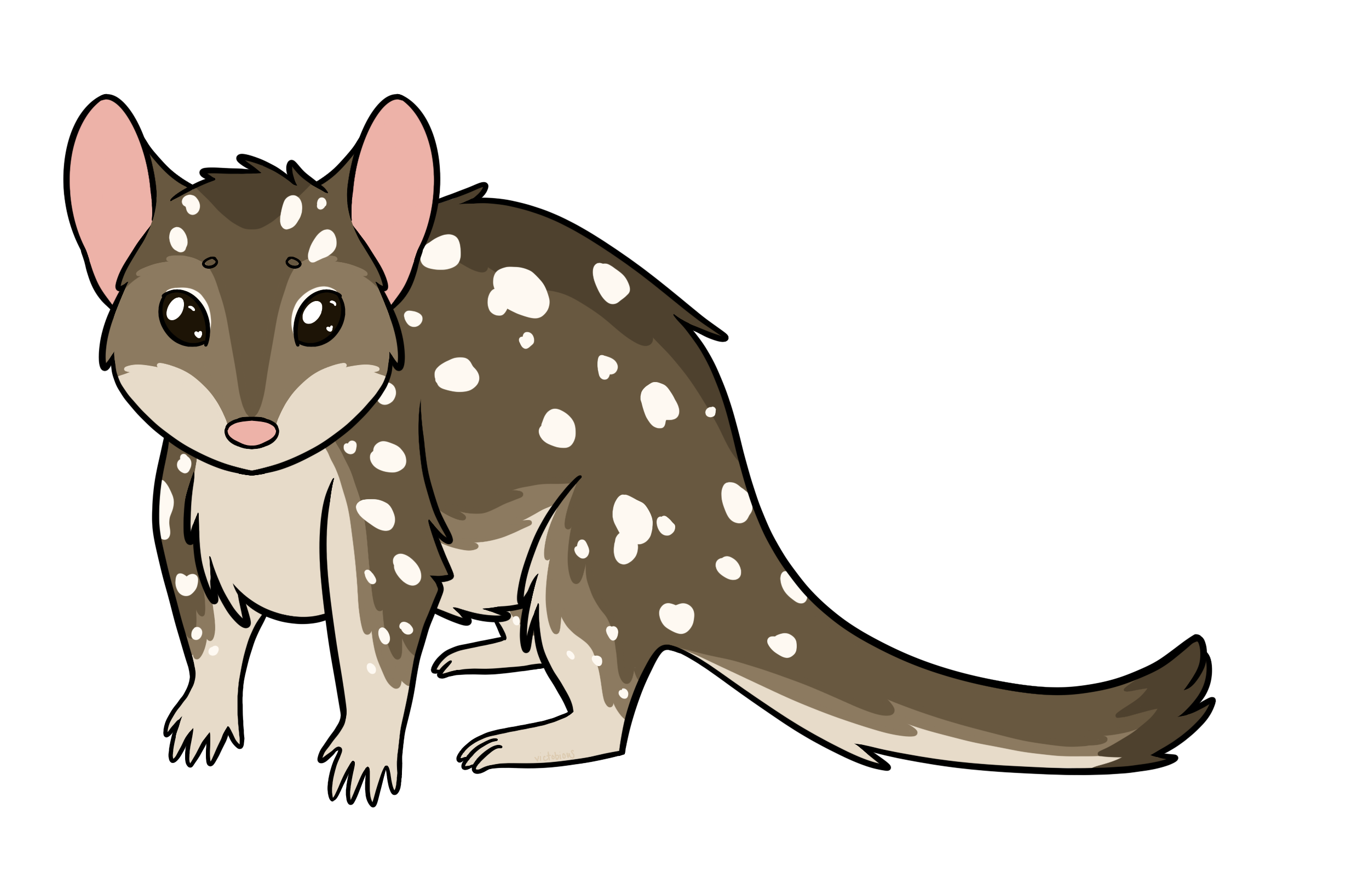Northern Quoll
Northern Quoll (Dasyurus hallucatus)
The Northern Quoll is one of four species of quoll native to Australia. It is the smallest of the four, with females ranging from 25 to 30 cm (about 10 to 12 in) and 350-690 grams (.77 to 1.5 lbs) and males ranging from 27 to 37 cm (10.5 to 14.5 in) and 540-1120 grams (1.2 to 2.5 lbs). Their tails are between 20 to 34 cm long as well. Northern Quolls are carnivores, who mostly eat invertebrates, but also eat fleshy fruits and some vertebrates, like small mammals, snakes, birds, and frogs. They also scavenge for food as well, including in roadkill and trash.
Males tend to die off after mating, which leaves the females to tend to and raise the young on their own. While the females have only eight teats, they can give birth to more than eight young at a time. Because of this, the young have to compete for survival right after birth. Males typically live to be around a year old, while female Northern Quolls can live up to three years. In rocky areas, both males and females can live between two and three years!
The Northern Quoll’s conservation status is currently Endangered. Their range has diminished significantly. They used to be found all across northern Australia, from Western Australia to south-east Queensland. Because of threats to the species, they are now found mostly in Pilbara, Kimberley, and in parts of the Northern Territory and Queensland. They live in rocky ranges, eucalypt forests, and the Daintree rainforest!
The species’ main threats are feral cats and cane toads, but dingoes and foxes are also predators to them. Another issue they face is environmental destruction, which has made predation from cats worse as ground cover is destroyed by fires and by overgrazing from herbivore species.
Cane toads are an invasive species that have become a huge threat to Northern Quolls, as they poison the quolls when they are eaten or mouthed. There is a decline in quoll populations where they intersect with cane toads, but quolls in Queensland have shown to be genetically averse to toads! There were also quolls in Kakadu that showed to be averse to toads after surviving the invasion of the toad species. Some of these quolls were transferred to a different area, trained to avoid toads, and reintroduced, but the attempt unfortunately failed due to predation from dingoes.
Currently, the Australian government has a recovery plan in place to help the species. The plan includes protecting the remaining Northern Quoll populations from cane toads and feral cats, figuring out and managing threats outside of cane toads, making efforts to recover populations in areas where they have died off due to invasion from toads, and raising awareness of the species with the public.
The Australian Wildlife Conservancy is also working to help protect populations and habitats of Northern Quolls in their sanctuaries. They are doing this by trying to reduce cat predation by making ground cover better in the area by preventing fires and controlling grazing by herbivores in the areas. They are also running research projects to help improve understanding of the species’ needs to help them thrive. The AWC has also helped efforts to teach the quolls to avoid toads with taste aversion training!
Sources:
https://en.wikipedia.org/wiki/Northern_quoll
https://www.australianwildlife.org/wildlife/northern-quoll/
https://kidadl.com/animal-facts/northern-quoll-facts
https://daintreerainforesttour.com.au/blog/what-endangered-animals-live-in-the-daintree-rainforest/
https://www.awe.gov.au/environment/biodiversity/threatened/recovery-plans/national-recovery-plan-northern-quoll-dasyurus-hallucatus-2010
Submitted By victobious
for Jungle Expedition: Report
Submitted: 3 years ago ・
Last Updated: 3 years ago
